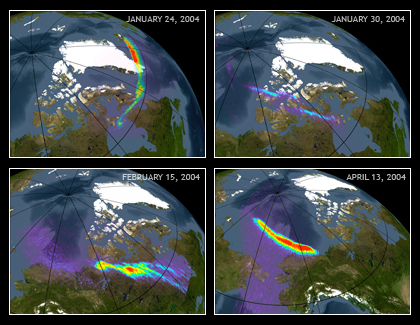Chandra Does Its Part For The Earth
When we talk about what Chandra observes, we're usually discussing things like black holes or galaxies or stars. But Chandra is a pretty amazing telescope and it can study many things in the Universe – including the Earth. Back in 2004, scientists used Chandra to study the aurora borealis, or "northern lights." By watching how the X-rays change over time, researchers learn more about how the Earth’s magnetosphere interacts with particles that are constantly streaming out of the Sun (called the solar wind). You can read the whole story in this 2005 press release.

As you may know, the Sun has a fairly regular 11-year cycle. And, when it’s at the peak of the cycle, the Sun can have some fairly intense storms on its surface that affect us here on Earth. They can cause some serious problems by knocking out communication satellites and the like. The bright side? They also create some gorgeous light shows for people close at higher northern latitudes. NASA has other satellites that study the Earth and Sun and everything in between, but it's good to know that Chandra can pitch in and do its part by keeping another eye on the planet.

Above: Deployment - Chandra on its way to work. Send this image as an ecard
-Megan Watze, CXC
Please note this is a moderated blog. No pornography, spam, profanity or discriminatory remarks are allowed. No personal attacks are allowed. Users should stay on topic to keep it relevant for the readers.
Read the privacy statement
